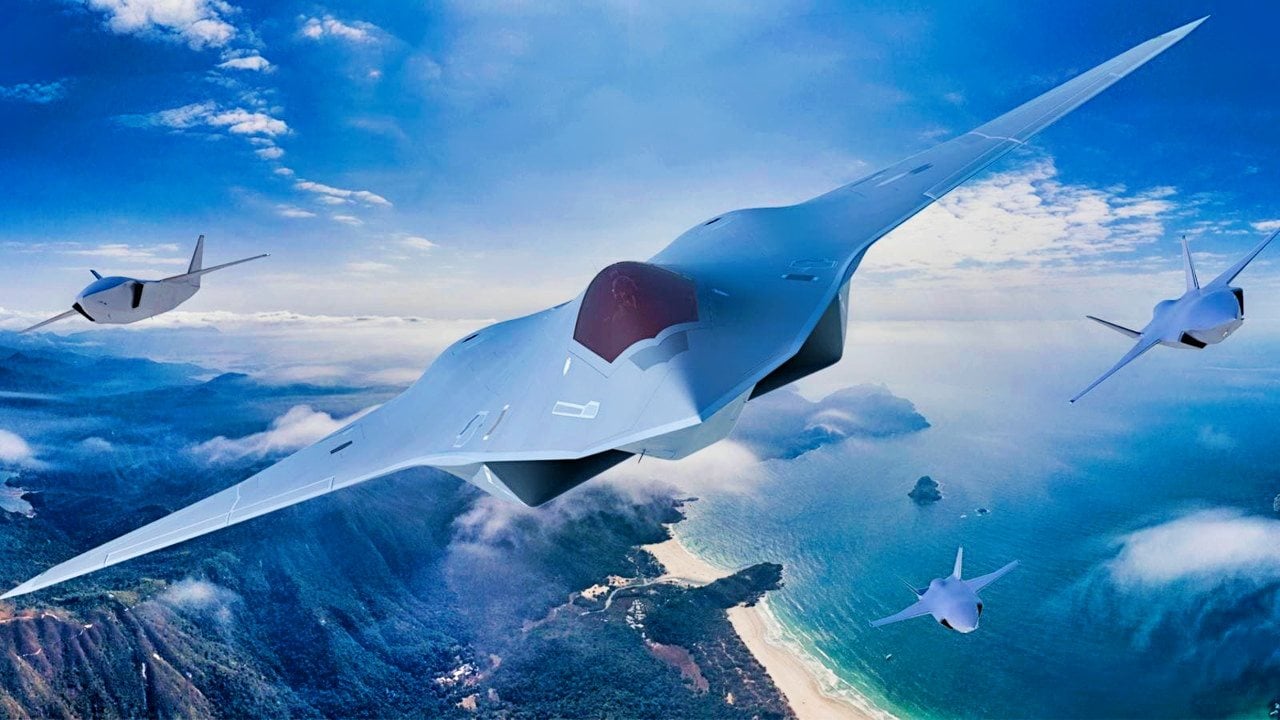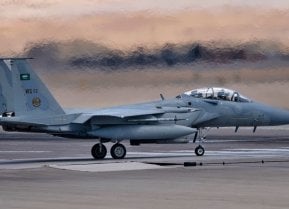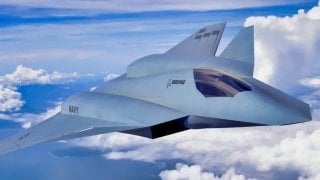F/A-XX: The Navy's Remarkable 6th Generation Fighter Is Coming Soon
The United States Navy's F/A-XX fighter is expected to receive almost full funding, meaning we could soon see the 6th generation fighter take flight.
The United States Navy's F/A-XX fighter is expected to receive almost full funding, NavalNews.com reported on Monday. It comes as a compromise in the Fiscal Year 2024 (FY24) National Defense Authorization Act (NDAA) to fund a special access program (SAP) believed to be for the next-generation stealth fighter.
Earlier this year, the House Armed Service Committee had cut $1.1 billion from the Link Plumeria line, citing "unjustified requirements." The U.S. Navy had requested $2.1 billion for Link Plumeria in its budget request for FY2024. However, the current version of the bill cut just $50 million from Project 2937, which is reported to be for the F/A-XX program inside Link Plumeria.
Connecting the Dots
NavalNews also reported that the connection between Link Plumeria and the U.S. Navy's F/A-XX program had been made earlier this year after the White House Office of Management and Budget (OMB) released a statement in response to the cuts.
"Link Plumeria. The Administration strongly opposes the $1.1 billion reduction to Project 2937 that supports the Navy's F/A-XX program. The language makes it impossible for the Navy to satisfy a critical element of the NDS in support of Joint Force priorities. The 70 percent reduction breaks the program and leaves the acquisition strategy unexecutable. Additional details can be provided at higher classification," the OMB release stated.
What We Know About the F/A-XX
The F/A-XX is a development and acquisition program for a future sixth-generation air superiority fighter to replace the United States Navy's F/A-18E/F Super Hornet and complement the F-35C beginning in the 2030s. A requirement to fund the program was first identified in June 2008.
The F/A-XX is further reported to be the manned fighter aircraft for the U.S. Navy's Next Generation Air Dominance (NGAD) program – not to be confused with a similar NGAD program underway with the United States Air Force to replace the Lockheed Martin F-22 Raptor.
However, the two efforts are seeking to develop a system of systems that will include manned fighters, unmanned drones that can act as "loyal wingmen" and other technologies, including a combat cloud.
As AviationWeek reported in July, while both services are heavily invested in NGAD development, the Air Force has been far more public in recent years about the spending profile and progress reports. By contrast, the U.S. Navy has kept nearly all details of its NGAD development program secret. Moreover, the Navy even classified the budget line until the FY24 request was unveiled – and it was determined the F/A-XX program had been hidden under the Link Plumeria SAP code name.
Even following last summer's disclosure of the budget, U.S. Navy officials have continued to hold their cards close to the chest.
What is known is that the primary missions for the F/A-XX next-generation fighter could include air combat, air-to-air, ground attack, surface warfare, and close air support. Platform requirements include supercruise capabilities as well as advanced next-generation stealth features, sensors, and radars with networking adaptability. Additional missions and capabilities include air-to-air refueling, reconnaissance, surveillance, and target acquisition (RSTA), and electronic warfare and countermeasures.
The F/A-XX platforms are being developed to carry missiles and other ordnance, while they will be equipped with power and cooling systems for directed-energy weapons (DEW), and will feature sensors that can target small radar cross-section targets; while cyber warfare platforms at the tactical level as part of a family of systems are being explored.
Though the U.S. Navy's NGAD effort is independent of the Air Force's program, the services have reportedly collaborated on a next-generation tactical fighter with supercruise ability.
Just One of Several Sixth-Generation Efforts
As noted, the U.S. Navy's NGAD is not connected – at least not directly – with the U.S. Air Force's sixth-generation program of the same name.
As previously reported by Maya Carlin, there are likely five different technologies that will be prioritized in the U.S. Air Force's NGAD's fighter design including advanced weapons, stealth, digital design, propulsion, and thermal management. While sixth-generation technology has not been precisely defined, the features in the NGAD program are expected to greatly exceed the capabilities of fifth-generation counterparts.
Moreover, we can expect artificial intelligence (AI) and machine learning (ML) to be incorporated into the NGAD, acting as a co-pilot for the manned aircraft and allowing the unmanned aerial systems (UAS) to act independently. In other words, the drones won't require constant directions from the manned aircraft – they'll follow orders, of course, but still show initiative.

The programs underway with the Air Force and Navy aren't the only endeavors to develop a sixth-generation aircraft and supporting systems.
There are two competing efforts in Europe – the British-led Global Combat Air Programme (GCAP), which also includes Italy and Japan; and the Future Combat Air System (FCAS) program, a French-German-Spanish partnership that recently saw Belgium join. There are also believed to be other programs underway in Russia, China, and Turkey.
The race to the sixth-generation aircraft is on, but it remains unclear which program will be the first to take flight.
Author Experience and Expertise
Peter Suciu is a Michigan-based writer. He has contributed to more than four dozen magazines, newspapers, and websites with over 3,200 published pieces over a twenty-year career in journalism. He regularly writes about military hardware, firearms history, cybersecurity, politics, and international affairs. Peter is also a Contributing Writer for Forbes and Clearance Jobs. You can follow him on Twitter: @PeterSuciu.
Image Credit: Boeing.


